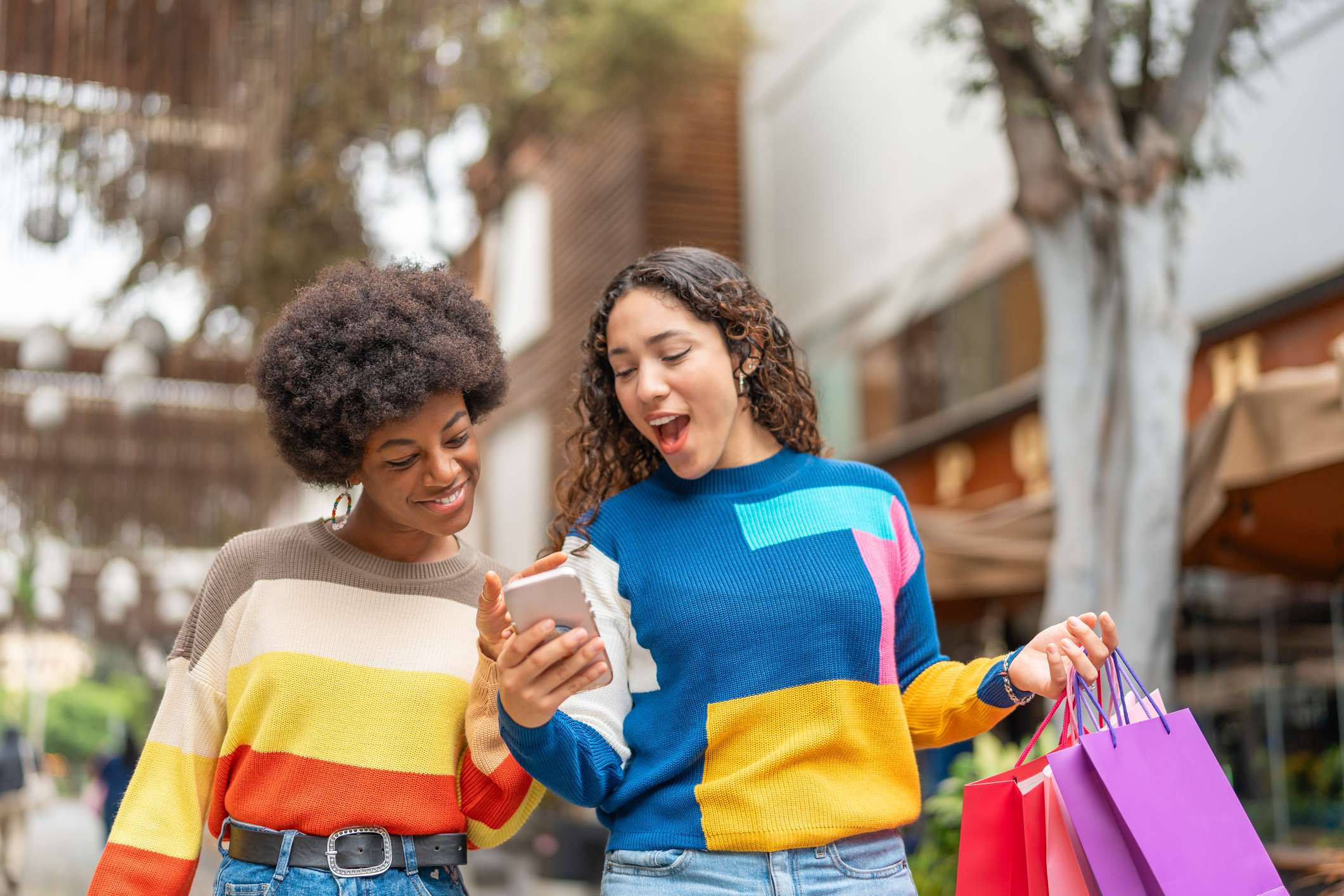An app-based product launch: How to successfully leverage digital marketing
There are three critical issues brands should focus on with a product launch: how to reach consumers; how to get them to share the brand’s message; and finally, how to get them to the store to buy their product. Unfortunately, that’s easier said than done. About 30,000 new products launch every year and every year, 80-95% of those new products fail to gain a following. The CPG sector is a particularly challenging space to launch a new product, but with a robust digital presence, success is more likely.
It’s not enough that consumers know about a product. They must also have a favorable impression of the brand and know where to find that product in the shopping aisle. By learning from consumer behavior, building awareness on multiple platforms, and creating campaigns that resonate, brands can grow enough of a following to help establish new products. It’s also possible to boost sales in the shopping aisle by making marketing efforts mobile. By reaching out to consumers through mobile apps, brands can target moving consumers and improve product launch results.
Spreading the Word About Your Product Launch: How to Reach Consumers
When you’re doing a digital product launch, you’ll want to choose a primary platform to share the launch and you’ll also need secondary routes to get those consumers to that place. This could include targeting a wide variety of sites where consumers congregate, to include the following.
Social Media
Platforms like Twitter, Facebook, and Instagram are excellent places to connect with consumers socially as well as encourage user-generated content.
Niche Communities
Niche communities: Reddit is a site where a brand can find niche communities that may be interested in their products. Focusing on these smaller communities within larger ones improves brand awareness.
Independent Websites
Check any comment section of a popular website and you may find that there is another community within a community. Consumers who comment in on CNN articles, as an example, tend to be frequent commenters who spend a lot of time on the site.
Video Platforms
YouTube and Vimeo allow users to both watch content and create and upload their own, making these sites ideal for branded content and advertisements.
A brand shouldn’t have to create multiple campaigns for each of these platforms. Instead, the goal should be to create a consistent, compelling conversation that translates across multiple platforms. It’s a matter of recognizing that many social media sites overlap, so a campaign should be able to do the same.
To understand this, you can look at the evolution of the hashtag. Initially, the hashtag trend started with Twitter. In 2007, the social media platform rolled out an option to categorize conversations by tagging it with “#.” While this was a very simplistic way to organize content databases, it was by no means in mainstream use. Today, we can see the hashtag on virtually all social media channels. Social media marketing mimics the evolution of the hashtag. Users discover a brand in one place but begin to follow it on other platforms if they become invested enough. This multi-media approach allows a brand to leverage that traffic to build buzz during a new product launch.
Tidy Cats, a Nestlé Purina Petcare brand, showed an excellent example of one of these multi-platform campaigns with its Kitten Week promotion. Tidy Cats is known for its parody content and decided to go with a fun parody on The Discovery Channel’s Shark Week. The award-winning campaign began on Twitter, where the brand shared kitten memes, gifs, images, and videos and encouraged viewers to share their own kitten content. That Twitter campaign also drove engagement on the brand’s YouTube and Facebook channels by tying in hashtags and user-generated content. Altogether, total views across social media channels reached 1.5 million in just a week and a half.
As evidenced through the Tidy Cats campaign, launching a campaign across multiple platforms can lead to increased engagement. Through a multi-platform campaign, a brand can significantly boost its following across channels and ensure they have the audience needed to spread awareness for a new product.
Connecting With and Inspiring Influencers on Social Media
In Internet culture, there’s a phenomenon called the 1% rule which brands should consider when establishing a digital campaign. This rule states that on websites where users can both create and edit content, only 1% of the users actively create new content, while the other 99% of the participants only observe. A variant of this rule, known as the 90-9-1 rule, breaks down participation as follows.
1%
On websites where users can both create and edit content, the minority will actually create this content. These creators will act as the most influential users of the site they’re on.
9%
On those same websites, there will be individuals who edit or modify content. This editing could include commenting, sharing, and voting on polls. These individuals contribute to existing content without creating their own.
90%
This percentage is where the vast majority of Internet users sit and represents the silent majority. These Internet lurkers will view content and read comments but will never actually interact with the content in any way.
What that means for you is that a small, vocal following will be responsible for sharing content about your brand. This is where influencers come in. While you may have heard the word “influencer” more than once, it’s important to note that there’s more than one type of influencer.
Mega-Influencer
Mega-influencers are online celebrities with massive followings across multiple networks. There’s no set number of followers to qualify someone as a mega-influencer, though most brands target those with more than 10,000 followers across several sites. Usually, deals with mega-influencers are paid for rather than organic. While useful, mega-influencers can also be very expensive, reducing your overall marketing ROI.
Macro Influencer
A macro-influencer will have a large following, but typically that following will be isolated to one specific social media site. This platform-specific fame usually results in an individual having a niche following. Consider the case of someone with a large following on a site like Twitch. As the site is populated by gamers, the followers of these macro-influencers will also be gamers.
Micro-Influencers
Micro-influencers may not have massive followings on social media, but what they do have is consumer trust. These are the individuals who hold sway within their social circles and can influence their friends and family to buy your product. While their reach might not be quite as far, it can be much more impactful as they usually have an intimate connection to those they recommend your products.
These types of influencers will help spread the message about your brand and drive others to try your products. Target these individuals with messages that feel personalized, or that uniquely connect to them. Pringles doubled down on this CPG marketing strategy and created an Internet phenomenon with #NobodyAskedYouKevin.
In 2017, Pringles noticed a trend when reviewing available data regarding their product online. They noted that consumers were posting “food hacks” that combined Pringles flavors to create new flavors. The brand decided to create the Stackable campaign around that, kicking it off with their Super Bowl commercial. They centered an advertisement around “flavor stacking,” using Saturday Night Live personality Bill Hader as a spokesperson. At the end of the commercial, Hader screams the line “Nobody asked you, Kevin!” That line created a spin-off with #NobodyAskedYouKevin trending on Twitter. Pringles, in turn, used the hashtag as their banner.
This strategy humanized the brand and let others know they were in on the joke. That made those consumers more willing to share the message and expand the brand’s reach for its campaign. While this wasn’t a new product rollout, it was an opportunity to view the product in a new way. Pringles capitalized on this and was able to turn that interest into brand awareness and sales through the use of mega-, macro-, and micro-influencers.
Directing Consumers to Products in the Store Using Mobile Apps
The final part of a product launch lies in leading consumers to the product in the physical world. Unless the majority of your sales happen in the digital space, you will need to drive the consumers to physically visit a location that carries the product, get them to interact with the product in the aisle, and finally, purchase that product. This step is where location-based mobile apps can help.
Any mobile campaign can be targeted to reach consumers at the right time. While a social media campaign can improve brand awareness and brand affinity, mobile makes that even more impactful. For example, if a consumer is checking their Facebook while at a store to purchase kitty litter, they may have noticed the Tidy Cats campaign. As that message reaches them just as they’re about to buy a product in that category, it’s very likely they’ll be the brand to gain the sale.
It’s possible to improve on this even more through the use of shopping apps. Apps that reward consumers for interacting with products, like Shopkick, can incentivize engagement and get consumers to seek out a product in the store. Essentially, they can move a consumer from awareness to purchase in one shopping trip.
Step #1 – Brand Awareness
When using Shopkick, a consumer will be able to check which brands are offering rewards points (aka kicks) in the store. This advertising primes the consumer with knowledge of the brand as they begin to shop.
Step #2 – Brand Affinity
When a consumer uses Shopkick, they’re able to scan the UPC of participating products to gain rewards. This brief interaction creates a favorable impression of the brand, and it prepares the user for purchase.
Step #3 – Brand Advocacy
A study on in-store consumer behavior found that 30% of products held in a potential consumer’s hand, for only moments, were purchased. When using Shopkick, consumers are incentivized to pick up the product, and can get more points for scanning the receipt of a purchased product, which boosts purchase likelihood.
Incorporating mobile into a new product launch campaign can significantly improve sales. Any brand that wishes to increase their market share through a digital campaign should find a way to engage with consumers in the store. Shopping apps like Shopkick create that connection, allowing your brand to travel the entire path to purchase with the consumer.
Using a shopping app to engage influencers while they’re in the shopping aisle can be part of your brand’s product launch how-to checklist. These influencers don’t have to have massive followings, as even micro-influences can help to create a stronger impact on your sales.
Shopkick offers a powerful shopping app to our partners to help boost awareness and increase engagement with new products. For more information, contact us.


